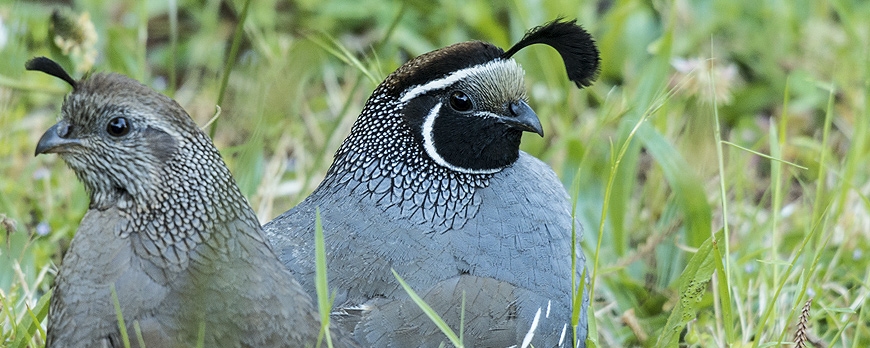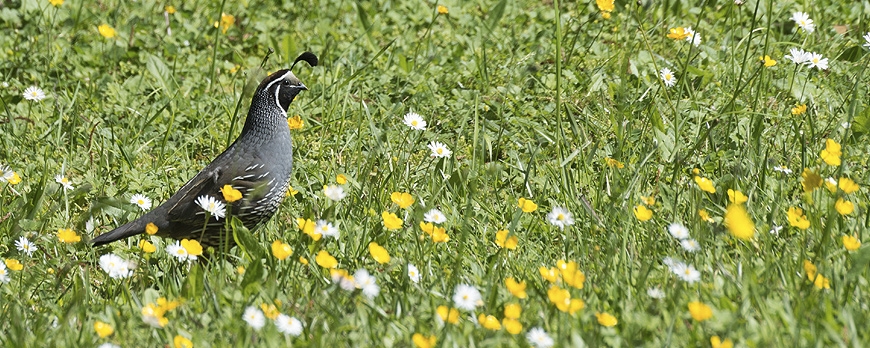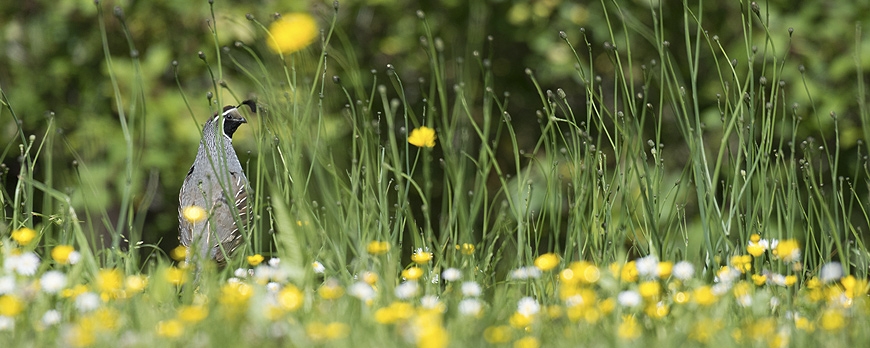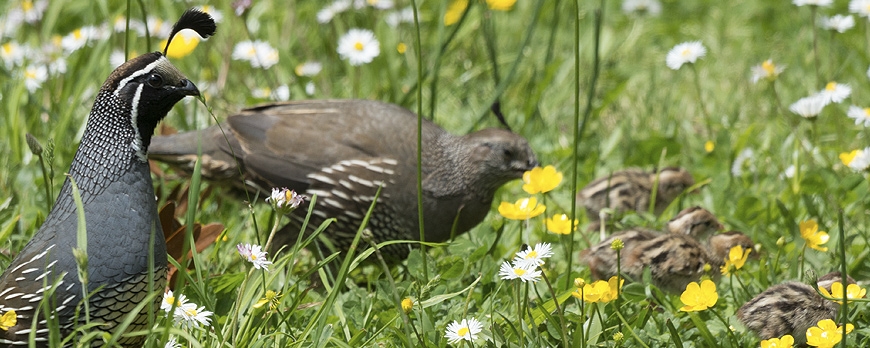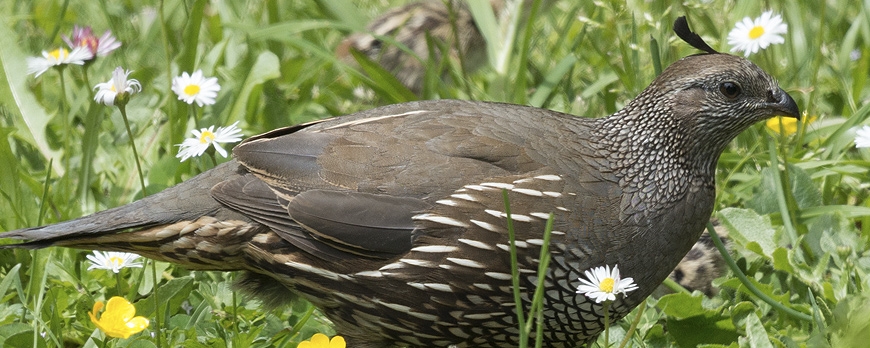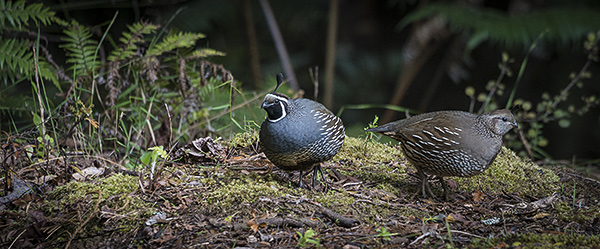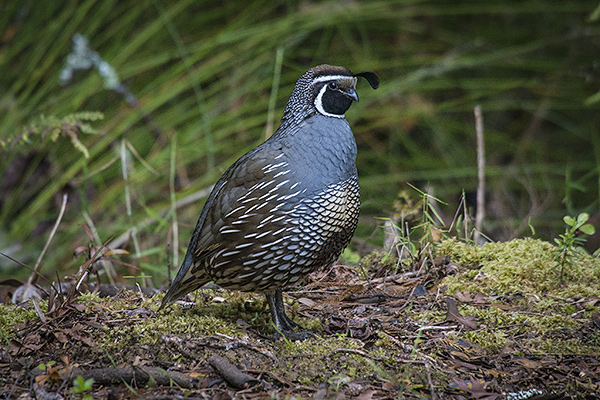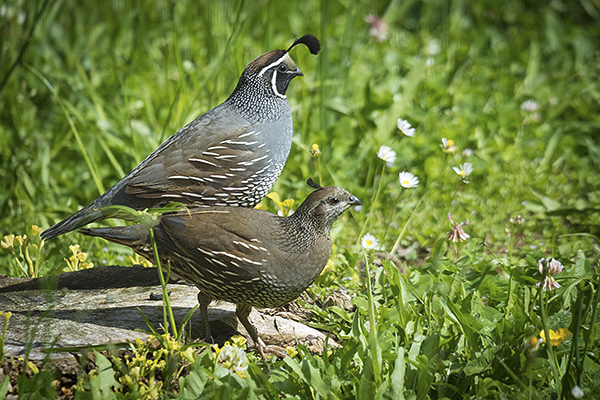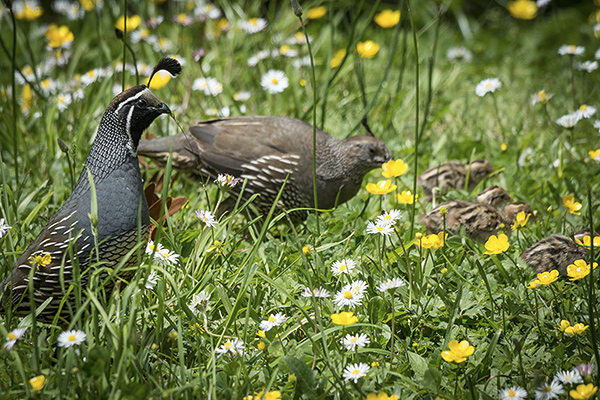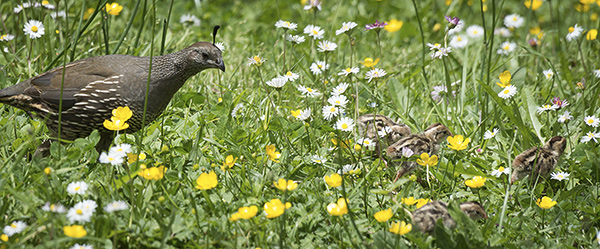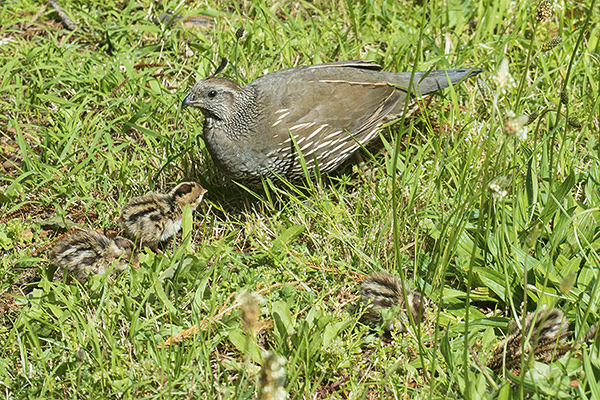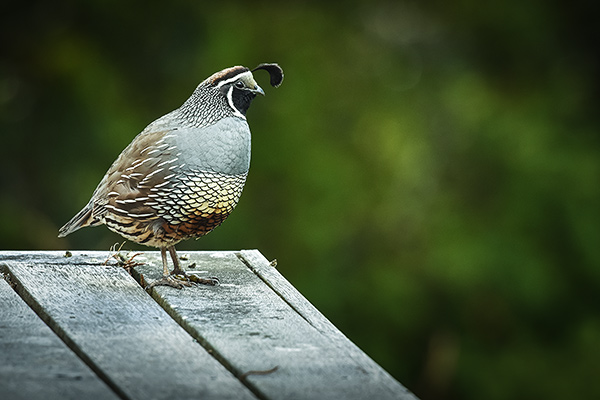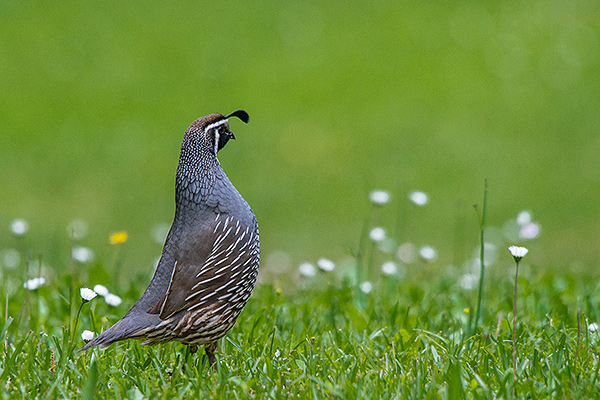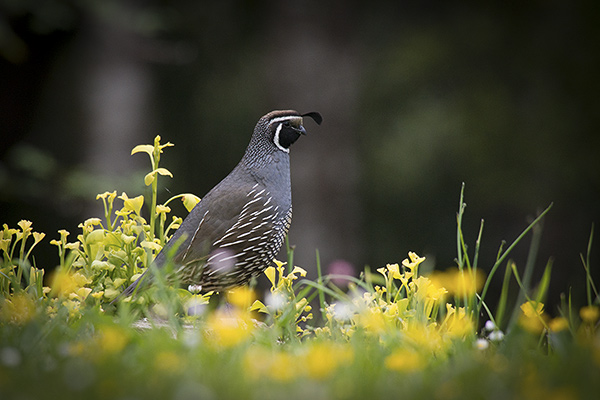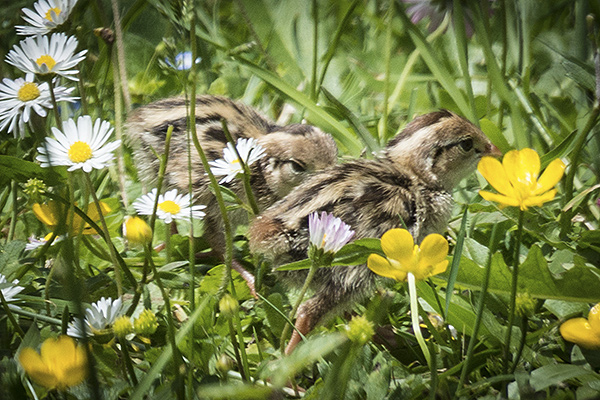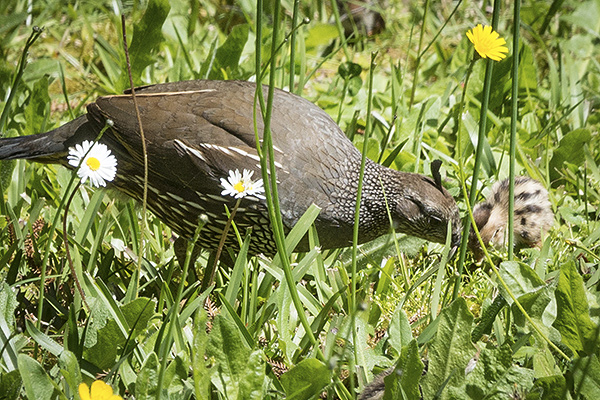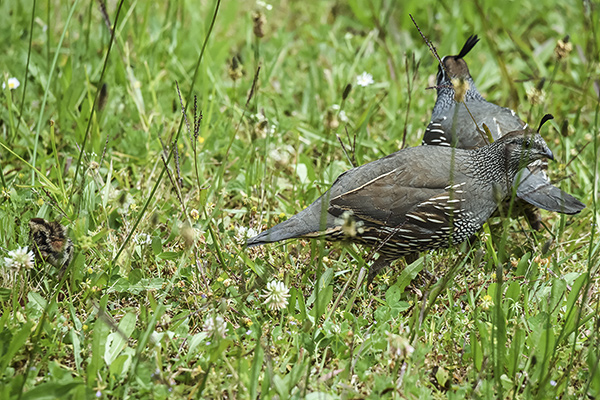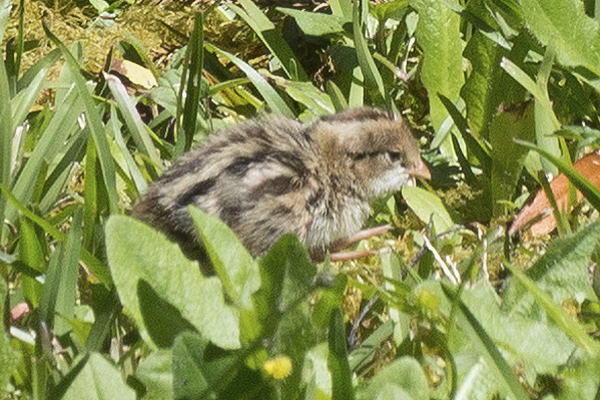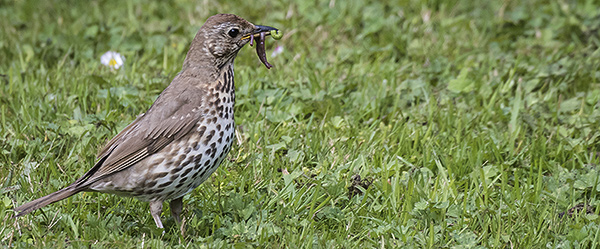The Season of the Quail
The Henge is our name for a roughly circular stand of tall trees, mainly Kauri, about 25 metres from our deck. It is a centre of bird activity on the property. There’s a bird bath that gets a lot of use and a sugared water station nearby especially for the Tuis. Tuis dominate the Henge. Large mature males delight in swooping down upon any unsuspecting bird rash enough to trespass upon their domain. Tiny Grey Warblers, assorted Finches, Rosellas and even the fat and sedate Kereru, the native pigeon, all get the same treatment. All that is, except the Californian Quail. For some reason Tui totally ignore them as they forage on the property for seeds etc. Recently we observed a male perched high in the Henge on a Kauri branch doing its ‘Chi-ca-go’ call, ignored as usual by the Tuis. Chicago is how the particular call is commonly referred to, although to our ears the call is more like ‘Ka-kaah-ko’, others say ‘qua-quergo’. It’s apparently a ‘social’ call, as opposed to an alarm call. This was an unusual sight for us, a quail on a branch in a tree and calling. After about five minutes of energetic crowing, he flew off leaving us wondering what it was all about. No other quail were in the vicinity – maybe it was trying to attract a female…
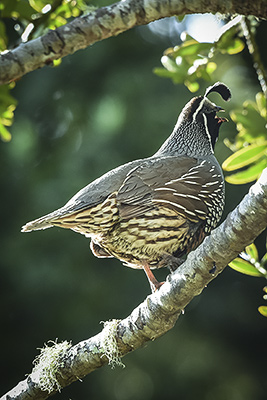 | 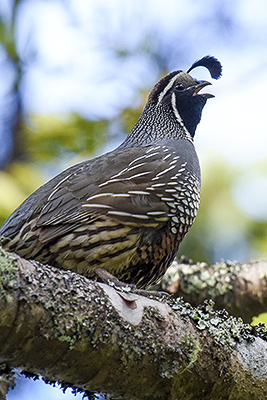 |
| ‘Chi-ca-go’ ‘Chi-ca-go’ ‘Chi-ca-go’. | |
Quail are usually to be seen at the edge of the lawn where it is bordered by native forest of mainly Kauri and Rimu. If their comfort zone of about 25 metres is breached they’ll rapidly fade into the trees. Couples and single birds are most common, though a couple of autumns ago we were treated to the sight of a large covey (name generally applied to flock of partridge quail and similar birds) of about 20 birds circuiting the property. We thought they were feasting on the large numbers of Kauri seeds that had recently fallen to the ground…
| Cock quail are more elaborately patterned and coloured than the hen birds... |
A couple of days after the aforementioned tree calling incident, looking out the window, we saw the amazing sight of a pair of adult quail emerging from a clump of Rengarenga Lilies bordering the lawn with a seething mass of tiny chicks. What excitement. Get the camera… and spent the next hour carefully stalking, photographing and observing the family.
| Californian Quail family – the hen seemed to be more active in controlling the brood. |
"The male seemed to take more responsibility for guard lookout duty – often perched on a tree stump or even the corner of our deck searching for potential threat of which there is plenty. Hawks are probably the biggest danger in daylight and cats, of course. As a young boy, while living in the foothills of the Kaimai Ranges, I was unable to stop three feral cats annihilate an entire brood of quail chicks. When I chased the cats they just circled back and darted from cover to pick off another chick – until all were gone. The very distressed adult birds were entirely helpless in defeating such a threat. By the time chicks are about a quarter the size of a female they can fly but until then fleeing a threat is the only defence – and they can run very fast. Day time is bad enough but nighttime must be a nightmare for the parents – Stoats, Rats, Moreporks, Possums can all create havoc. Cats also hunt at night though in rural Oratia where we live, cats are probably not a common choice of pet as birdlife is generally valued, particularly native birds. Although it has to be said, that the sound of bird scarers in the fruiting season attest to the problem that fruit growers have with small birds to crops of fruit, apples, grapes etc. We’ve seen a probably feral black cat lurking around the property recently not quite sure how to deal with the menace it represents – must do some research... It is no wonder that survival rate of quail chicks is extremely low…
| Cock Quail on lookout duty. |
Chicks are extremely active, swarming in all directions. They are about the size of a walnut, striped and fluffy. Still, despite appearances, there must be some organisation to the chaos – parent birds didn’t seem to have to do too much active organising – though there was probably a constant communication. Chicks are said to make a high whistle designed to alert parents as to their location in return the adults emit low contact sounds which apparently include foraging grunts, sharp urgent tut-tut warnings and soft tup-tup sounds. Can’t say we noticed any though. It’s been a rather wet spring and opportunities to mow our somewhat boggy lawn have been few. So at this time the lawn was rather longer than usual, a mass of daisy buttercups and tall dandelion. Quail heaven, lots of seed heads and insects, the young being insectivorous initially. The unruly lawn must seem like a forest to these tiny birds...
| Chicks searching for insects while mother has a chat. |
The next day, the family was back on the lawn. We were somewhat disturbed to note only six chicks, but relieved when a short time later, we spotted another family group with many chicks. Unfortunately in a couple more days an adult pair was observed with a single solitary chick – was this all that remained of the dozen or so chicks we’d been observing? Tragedy! But whether we like it or not, it’s just a fact of life that a large percentage of all the offspring of our bird population are destined to never reach adulthood.
| Parent Birds with the lone survivor. |
A spell of fine weather presented an opportunity to mow the lawn and unfortunately the quail have lost their prime grazing area. Since then sightings have been few and far between.
| Thrushes and Blackbirds appreciate the mowed lawn however... |


